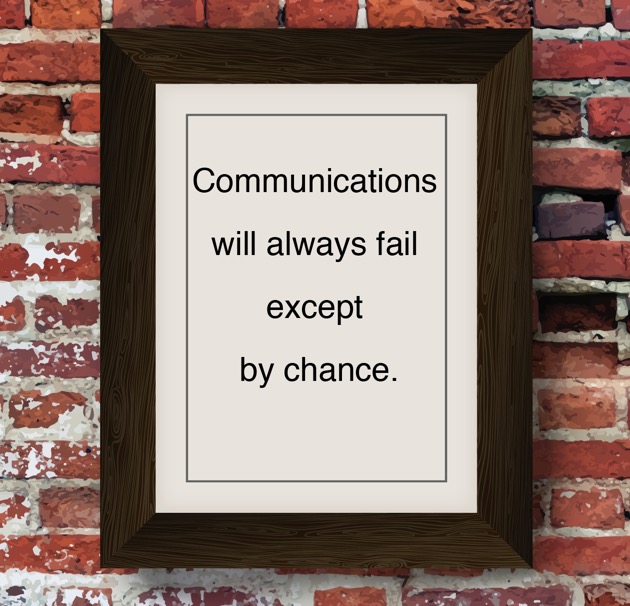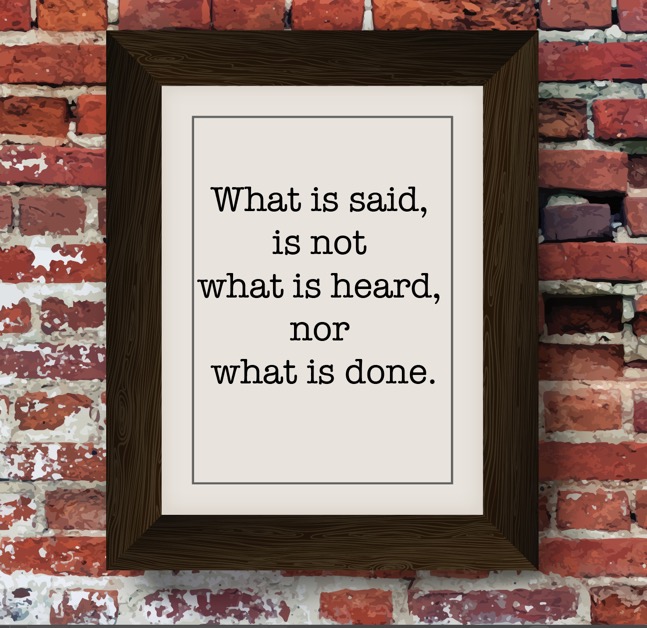More Meaning, Not Just More Messaging – 7 Levels of Communications
By Thomas B. Cross CEO SocialStreamingTV.com
If your head is or has exploded due to the massive messaging taking place and left not with any sense of meaning you are suffering from “zoom fatigue.” As one person said, “there are only so many video meetings and webinar I can take before I just want to scream.” No doubt that people are “zoomed over” as more meetings don’t provide any more meaning much less understanding. The possibility of any one piece of information being understood on a minimal level by a diverse group of individuals is becoming rare.

As I have said for decades, communication will usually fail except by chance. Given this kind of environment, coupled with rapidly changing technological conditions, increasingly complex kinds of information, and diverse societal interpretations of information, informational architecture needs to be constructed that can cope with these issues. Needless to say, standards are often society’s worst example of accomplishing anything more than mediocrity.
To keep this process relatively simple, I propose seven levels of interaction:
Levels of Interaction
1 – Physical: the actual physical recognition of an experience
2 – Interpretive: putting such experience into recognizable patterns
3 – Ambiguous: adjusting those patterns for focus or open-ended manipulation
4 – Thinking: associating information with other experience
5 – Cognitive: active manipulation and integration of symbols
6 – Contextual: prioritization of symbols, issues, action items
7 – Philosophical: none of the above
Look you may not see any purpose in this but, if you want to understand people, have more meaning not just more communications, you need to “jump into the deep end of the pool” and do something.
DIY Commmunication
I encourage you to build your own or DIY communication “levels” to help you navigate organizational communication and gain real meaning. In creating “more meaning” for each of these levels, it is understood that knowledge can move from one level to another without any intervention from the other levels. Also, it is a given that each of these levels has a positive and negative element (for example, +10, 0, -10). It is possible that humans might deal with ambiguity by cheating their way through an uncertain or unknown activity at Level 3. Within each level, such elements as repetition and similarity exist that allow humans to create mental “replays” of past events without physically experiencing the event in the present, leading to confusion and ambiguity about “real” versus “imagined.”

The human machine has the ability to vary the elements of a particular event, thus allowing additional and more diverse experiences to have occurred in the mind than in reality. The Interpretive Level focuses on the second level of understanding beyond simple Physical Level 1 recognition of what the experience or object is. For example, the physical recognition that the object ahead of us is a grizzly bear can be more important to our personal survival than philosophical discussion of a bear’s eating habits. At the same time, interpreting hundreds of details that occur in any one hour while working at one’s desk requires a deeper understanding of input-output issues than is required while eating dinner or Thinking Level 4 At any one time it could be argued that any of the above is true, depending on the interpretation. Ambiguity or Level 3 is similar to interpretation, but it is a narrowing or widening process.
Sometimes interpretation needs to be rapidly narrowed in order to make a quick decision. Visit any hamburger stand. You are faced with entering the building, interpreting and narrowing the choices, and making a decision. As mentioned earlier, ambiguity also relates to cheating, wild cards, tricks, and other skills that make the interpretive process faster or more enjoyable. There are other mental power tools that can be compared to a vast array of AI programs. Each of these Levels contains a test that the activity can be accomplished successfully. This prepackaging of skills allows us to perform many activities without ever thinking about them. Even complex tasks such as driving home from work are relatively automatic once they have occurred with some frequency. Remember that, to a point, activities can skip to higher levels such as Cognitive and Contextual Levels. In some cases, events can be considered philosophically at Level 7 before any physical action takes place.
Summary – I don’t have all the answers but have given this a lot of research and thought and if nothing else thank you for considering this while building your own model.

